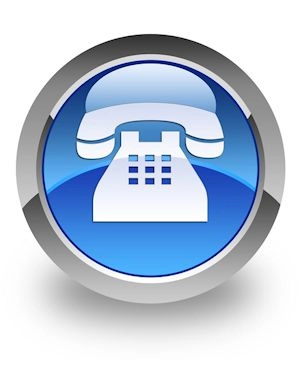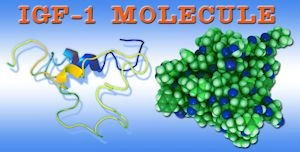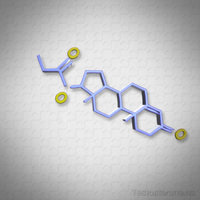 As a result of advances in modern medicine, the leading causes of mortality have changed dramatically over the last 100 years.
As a result of advances in modern medicine, the leading causes of mortality have changed dramatically over the last 100 years.
Today, heart disease is the number one mortality risk among both sexes in the United States.
Heart disease has a variety of risk factors, some of which are hereditary; however, there is a lot that you can do to mitigate the risks associated with heart disease.
Concerning lifestyle, one can reduce their risk of heart disease by eating healthier, cutting back on alcohol, exercising more often, and quitting smoking.
Video Link: https://vimeo.com/291342295
Video Download: Information About Chelation Therapy
Video Stream: Information About Chelation Therapy
There is also a lot that can be done to treat heart disease once it is diagnosed. Heart surgery is common, and there are medications that can both reduce risk and increase life expectancy.
The best option is a combination of exercise, medicine, and education, designed to help patients improve the health of their heart.
What Is Chelation Therapy?
Chelation Therapy is one of many experimental treatments that have been utilized as a means to treat heart disease. Chelation Therapy refers to the use of a chemical known as Disodium-EDTA to filter the heart and bloodstream.
Though naturally produced by the human body as an amino acid, the compound was first synthesized in Germany during the 1930s but was not used therapeutically until WWII.
Chelation Therapy was first utilized during WWII, by scientists at the University of Oxford, as a means to treat chemical weapons exposure.
Use of Chelation Therapy Today
Chelation Therapy is somewhat controversial but still utilized to a great extent across the United States.
The treatment has not received FDA approval but is frequently prescribed by doctors nationwide in the arsenal of tools against heart disease.
The procedure is not available without a prescription, and Disodium-EDTA is prescribed over 100,000 times per year. Chelation Therapy belongs to a class of treatments known as Complementary Medicine—Chelation is not used as a primary treatment for Heart Disease but is used as a means to improve the effectiveness of primary therapies.
How Does Chelation Work?
Chelation works like a microscopic filter that travels through the bloodstream absorbing molecules and allowing them to be extracted from the urine.
It is highly effective in removing lead from the bloodstream and was initially designed to treat arsenic poisoning via lewisite. FDA-Approved uses for chelation therapy are for the removal of excess iron and lead from the blood.
 In the case of heart disease, a series of high doses of Disodium-EDTA are injected into the bloodstream.
In the case of heart disease, a series of high doses of Disodium-EDTA are injected into the bloodstream.
Chelation Therapy is rather intense, and generally, requires weekly rounds of 30+ doses of the treatment in its initial phase.
Chelation Therapy is very effective at drawing minerals and vitamins out of the bloodstream, as well as other molecules, so Chelation is almost always paired with high-dosage supplementation of essential nutrients.
Other Potential Benefits of Chelation
Though current research deals with specific aspects of Chelation's impact on Heart Disease, there are many reasons why Heart Specialists turn to Chelation, even without FDA-Approval. Chelation is frequently prescribed to treat Coronary Artery Disease and Atherosclerosis.
The hypothesis is that Chelation Therapy works by extracting calcium deposits from the arteries and eliminating them through the kidneys to improve the effectiveness of heart function.
 Another hypothesis regarding how and why Disodium-EDTA benefits patients are because it is a powerful antioxidant.
Another hypothesis regarding how and why Disodium-EDTA benefits patients are because it is a powerful antioxidant.
LDL Cholesterol can lead to artery-damage because it combines with minerals in the bloodstream, such as calcium and copper.
Disodium-EDTA absorbs these minerals and extracts them, which may reduce the risk of arterial damage.
There is also the risk that Chelation Therapy could sap calcium from healthy tissues, which is a risk that should be assessed, and also why Chelation appears to work best with High-Dosage Supplementation.
There are also widespread reports that Chelation can help patients deal with the pain associated with inflammatory conditions such as scleroderma, lupus, and arthritis as a result of Disodium-EDTA's properties as an antioxidant.
Study Measures the Effectiveness and Potential Benefits of Chelation Therapy
In recent years, a massive investigation was conducted to discern the potential effectiveness of Chelation Therapy, a combined effort of the National Heart, Lung, and Blood Institute and the NCCIH. Patients accepted into this study had a history of heart disease, which included a heart attack.
Initial results from this extensive study, which monitored 1,708 patients, showed that Chelation Therapy did produce positive outcomes for patients, but only a specific subset of patients who suffered from diabetes.
That isn't to say that the results were not significant because around one in three patients in the study experienced co-morbid diabetes and heart disease.
So, for patients without diabetes, the results were insignificant, but among those with  diabetes, the results were robust.
diabetes, the results were robust.
For patients with diabetes, heart attack, stroke, and fatal heart event risk dropped by 40%.
The risk of future heart attacks fell by more than half!
The study also analyzed the effectiveness of Chelation Therapy in a vacuum, and when combined with supplemental infusion, and found that the combination of High-Dose Supplements with Chelation Therapy provided the maximum results.
Of course, no matter how extensive the study was and how strong the results appeared, further evaluation and investigation are required.
A second study is currently underway, known as the Trial To Assess Chelation Therapy 2.
How Safe is Chelation Therapy?
Aside from effectiveness, it's also essential to analyze the safety profile of the treatment. Chelation Therapy does have risks, but fatality risk appears to be low (though still a factor to be considered).
In the previously referenced study, around 1 in 7 patients had to quit the study due to adverse events in both the placebo group and the experimental group.
The most widely reported side-effect of Chelation Therapy was a burning sensation at the injection site.
A small minority of patients may experience vomiting, nausea, headache, or fever as a result of Disodium-EDTA.
The most dangerous side-effects of Chelation Therapy are infrequent and include Hypocalcemia, a sharp drop in blood pressure, heart failure, kidney damage, and low blood cell count. Under most circumstances, kidney damage is reversible.
These risks appear to be significantly reduced by combining the treatment with Vitamin and Mineral Supplementation, and by not administering Chelation too quickly.
The chance of a significant adverse event seems to be strongly associated with the improper administration of the treatment by an untrained provider.
Should I Consider Chelation Therapy with Disodium-EDTA?
Chelation Therapy should only be undergone with the express consent of a health care provider that specializes in cardiovascular care.
There are over-the-counter supplements that claim to provide the benefits of Chelation, but these should be avoided at all costs.
References
Chelation for Coronary Heart Disease
Contact Us For A Fast And Professional Response

- The Other Aspect of Dieting – Removing Chronic Stressors From Your Life [Last Updated On: February 9th, 2025] [Originally Added On: September 9th, 2020]
- The Flaws of Six Popular Diets [Last Updated On: June 6th, 2025] [Originally Added On: September 20th, 2020]
- Purchase Sermorelin Acetate Injections Online [Last Updated On: February 8th, 2025] [Originally Added On: September 23rd, 2020]
- Eating Right On a Low-Glycemic Diet [Last Updated On: April 20th, 2025] [Originally Added On: October 1st, 2020]
- The Benefits of Intermittent Fasting [Last Updated On: May 16th, 2025] [Originally Added On: October 2nd, 2020]
- Eat Healthier with White Flour Alternatives [Last Updated On: August 26th, 2025] [Originally Added On: October 3rd, 2020]
- Ten Common Contributors to Obesity that Make it Hard to Lose Weight [Last Updated On: March 5th, 2025] [Originally Added On: October 4th, 2020]
- How Can Sermorelin Enhance Your Life? Losing Weight and Battling Premature Aging With Sermorelin [Last Updated On: April 1st, 2025] [Originally Added On: October 5th, 2020]
- Benefits and Risks of HGH Therapy: 2018 Update [Last Updated On: April 15th, 2025] [Originally Added On: October 6th, 2020]
- Have You Heard About the 21st Century Breakthroughs in Hormone Replacement Therapy? [Last Updated On: September 16th, 2025] [Originally Added On: October 7th, 2020]
- The Importance of Omega-3 Fatty Acids [Last Updated On: June 4th, 2025] [Originally Added On: October 8th, 2020]
- The Relationship Among Testosterone, Obesity, and Alzheimer's Disease [Last Updated On: August 25th, 2025] [Originally Added On: October 9th, 2020]
- Major Alzheimer's Risk To Continued Sleep Deprivation [Last Updated On: April 29th, 2025] [Originally Added On: October 10th, 2020]
- Should You Choose the Ketogenic Diet? [Last Updated On: May 7th, 2025] [Originally Added On: October 13th, 2020]
- HGH and Insulin: The Primary Agents of Energy Bio-Availability [Last Updated On: March 24th, 2025] [Originally Added On: October 14th, 2020]
- How Can Women Maximize HGH Production? [Last Updated On: April 5th, 2025] [Originally Added On: October 18th, 2020]
- Micro Nutrients Versus Macro Nutrients [Last Updated On: January 11th, 2025] [Originally Added On: November 4th, 2020]
- Some of the most effective Weight Loss Injection and Diet Injection Programs [Last Updated On: June 10th, 2025] [Originally Added On: November 6th, 2020]
- Seven Ways to Help You Burn Calories Faster and More Effectively [Last Updated On: March 28th, 2025] [Originally Added On: January 21st, 2021]
- Don’t Eat These Foods When Taking Sermorelin Acetate for HGH Deficiency [Last Updated On: February 14th, 2025] [Originally Added On: February 3rd, 2021]
- Understanding Aerobic vs. Anaerobic Exercise [Last Updated On: May 13th, 2025] [Originally Added On: March 4th, 2021]
- Physician’s Fact Sheet: Vitamin E [Last Updated On: January 10th, 2025] [Originally Added On: March 8th, 2021]
- Naturally Losing Weight with Lifestyle Changes Keeps the Weight Off for Good [Last Updated On: May 4th, 2025] [Originally Added On: March 27th, 2021]
- The Health Benefits of the Amazing Strawberry [Last Updated On: February 9th, 2025] [Originally Added On: May 8th, 2021]
- Need Better Sleep? Try Eating Pistachios Before Bed! [Last Updated On: January 21st, 2025] [Originally Added On: February 16th, 2022]
- Three Kinds of Body Fat and How They Impact Your Health [Last Updated On: August 12th, 2025] [Originally Added On: April 12th, 2022]
- Pistachios: You’re Not Nuts [Last Updated On: January 4th, 2025] [Originally Added On: August 3rd, 2022]
- 7 Surprising Things That Mess With Your Hormones [Last Updated On: February 26th, 2025] [Originally Added On: September 5th, 2022]
- Adding Cranberries to Your Diet can Really Add Zest – and Health – to Your Life. [Last Updated On: September 27th, 2025] [Originally Added On: January 10th, 2023]
- Raspberries – Delicious Portal to Shining Good Health [Last Updated On: October 1st, 2025] [Originally Added On: January 18th, 2023]
- Study Shows Cialis and Viagra Users have 25% Lower Early Death Rates [Last Updated On: March 14th, 2025] [Originally Added On: February 19th, 2023]
- Introduction: Understanding the Multifaceted Nature of Obesity [Last Updated On: March 2nd, 2025] [Originally Added On: March 2nd, 2025]
















